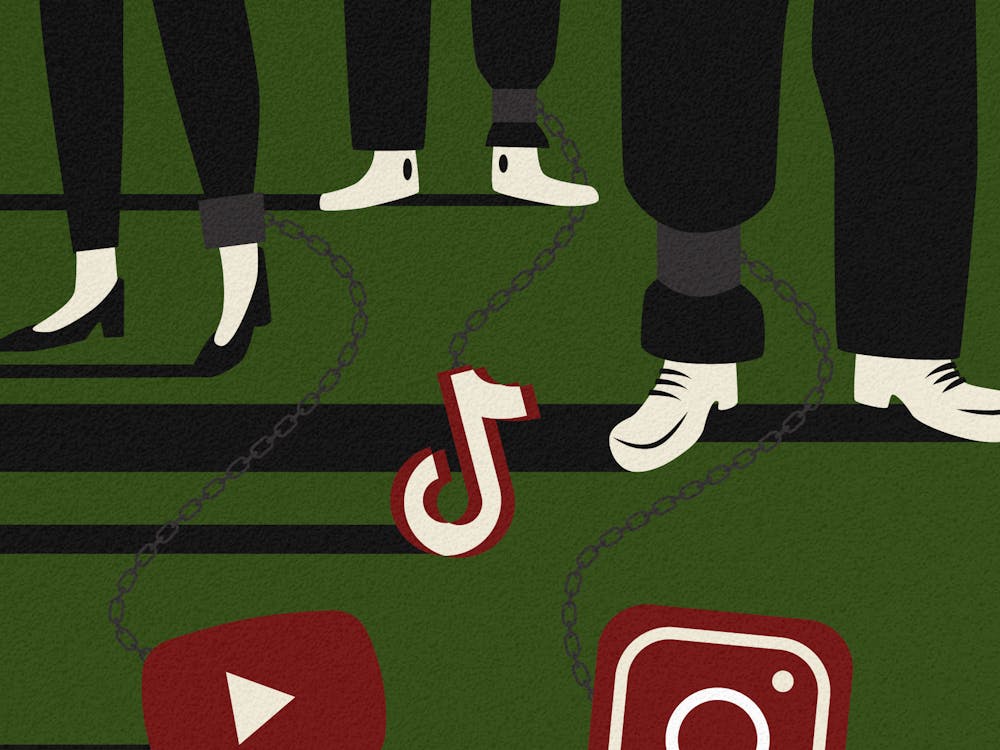The following reflects the majority opinion of the Editorial Board.
Miami University has lost millions of dollars due to the COVID-19 pandemic, which caused budget cuts. And one of the first things to go was visiting assistant professors (VAPs). With the loss of so many great teachers, along with them went the values our institution claims to hold.
Now, professors are stressed to the point of losing sleep and compromising their style of teaching because they’re being asked to teach more classes to fill spaces VAPs once held. As such, many departments across campus are grossly understaffed.
Miami’s reputation for being a top school for undergraduate teaching is in serious jeopardy if this continues.
And to us, that reputation is most of Miami’s appeal. A Miami degree means something after we leave Oxford.
Beyond simply expertise, many of our departments have also lost some of their diversity because of these VAP cuts. With the school already under fire for its deep-seated whiteness, that feels like a slap in the face considering the promises the university has made to improve upon creating a diverse environment on campus.
How can we expect to maintain any claim to excellence when we don’t have voices from different backgrounds leading classrooms?
Provost Jason Osborne says the university has the best interest of the students’ tuition dollars in mind when making these decisions. But how are these cuts benefiting any of us as students?
It’s simple — they’re not. Teachers are under extreme pressure to meet the needs of their departments without any extra help. So, in the midst of picking up extra work, learning how to teach with new technology and letting nothing slip through the cracks, teachers are unable to perform at their best.
With many professors having more classes to teach, and more kids to teach them to, they can’t do their job to the best of their abilities. Their classes are bigger than normal, and so we lose the small class experience that so many kids expect when they come here.
Miami is a medium-sized school. In fall 2019, our undergraduate main campus enrollment was 17,327. In fall 2020, Ohio State’s undergraduate main campus enrollment was 46,984.
Looking at the numbers, we are not Ohio State, no matter how much the administration may love to follow its lead. Students come to Miami hoping for a more individualized learning experience. Instead, they’re getting jammed into lecture-style zoom classes that fall short of excellence by a mile.
Enjoy what you're reading?
Signup for our newsletter
To address and begin solving this problem, we need to cut money from other places. The top 10 highest paid officials at our university took 10% pay cuts at the beginning of the pandemic. They should do it again.
The money needs to be reinvested in what makes us a great school — the classrooms. That’s what students really care about, and that’s what the university we pay to attend needs to care about, too.
Our education has taken enough of a hit through the transition to virtual learning. We don’t need it to get any worse. And honestly, we can’t afford it. Students will stop coming here if they are not going to get the academic experience they’re paying for.
So the administration should take money away from where it absolutely does not need to be: in the pockets of highly paid administration, new buildings and brand new sports equipment.
They should have a donor benefit to raise money to hire more professors, specifically professors of color and other minority groups. Reallocate the unrestricted funds we already have in the Education & General budget to where they will actually benefit students on a fundamental level.
As for what university officials can do to support teachers right now: acknowledge the mess they’ve created, extend the mental health services available to students to faculty and staff, and for the love of god, don’t do this to our professors again.
We’ve all had enough.
CORRECTION: A previous version of this editorial stated Miami's top 10 highest paid officials took 10% payouts at the beginning of the pandemic. Those officials took 10% pay cuts.



